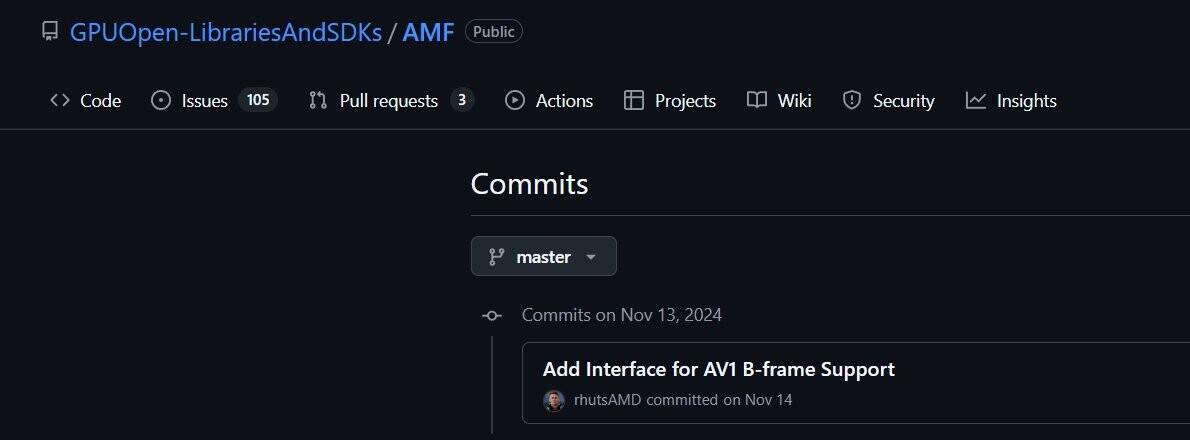The silicon known as "Navi 48" that will power AMD's upcoming Radeon RX 9070 series may include AV1 hardware-accelerated encoding capabilities along with support for AV1 B-Frames. B-Frames are intermediate frames in video compression that lack image information but contain motion-vector and other data from previous and next frames, aiding in image reconstruction by the decoder based on temporal frame data. This feature, while computationally intensive, significantly reduces file size or bitrate as most frames do not contain image information. The discovery of AV1 B-Frame hardware-accelerated encoding support was made by HXL in a recent commit to one of AMD's SDKs available through its GPUOpen initiative.
AMD's Radeon RX 9000 series, based on the RDNA 4 graphics architecture, will primarily rely on two chips: "Navi 48" and "Navi 44." The latter will power mainstream and mid-range SKUs, while the former will be used for performance-segment products. Unlike previous generations, there will not be a chip specifically for enthusiasts. It is anticipated that "Navi 48" will offer more advanced video encoding/decoding hardware compared to RDNA 3.5, with a focus on AV1 development due to the codec's increasing popularity among online video streaming services. The support for acceleration of VVC in future architectures like RDNA 4 or NVIDIA's "Blackwell" remains uncertain.
